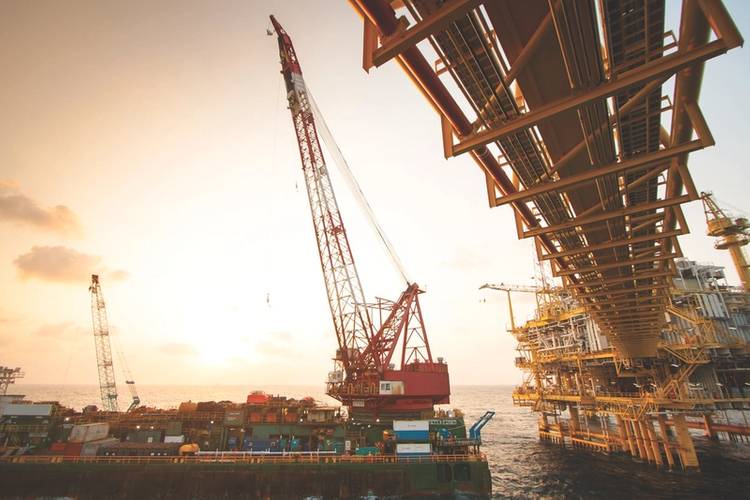Technology helps maritime companies do more with less. But today, technological advances are outstripping legal developments. As a result, many marine-based businesses operate in a legal limbo with many lawyers and insurance professionals confused about what laws will apply to what claims. While sometimes philosophical, the problem of what law will apply becomes stark and very real when a worker is injured.
Changing Seascapes
We live in a golden age of maritime technological development as we learn to use our oceans, lakes, rivers and coastlines in new and unique ways. With new contraptions entering the water every year, lawyers and insurance professional are constantly asking themselves: what is this thing under the law? Is it vessel? Is it a port? Could it be both a vessel and a port? What if it is fixed to the seabed? Any wrong answer to those questions can result in a firm-ending lawsuit in the event an employee is injured on the job.
The U.S. waterfront is controlled by a mishmash of state and federal laws. States have sovereignty over their own territorial waters, generally within three miles. Outside of three miles, the feds claim dominion. But federal law also extends to anything that could be considered a vessel. Federal law also extends to elements of locks, dames, harbors and piers. This distinction exists only on paper and in the minds of lawyers and politicians. In reality, workers and equipment transit these imaginary boundaries constantly throughout the day. As a result, a complex bouquet of worker protection laws has evolved to ensure that no worker is left without a remedy in the event they are injured at work. But figuring out which remedy might apply can sometimes be a challenge.
Maritime Worker Coverage 101
There are three basic ways maritime workers are covered in the U.S. The most common is worker’s comp, a state-based program, in which the employer buys insurance. If and when an employee is injured, that employee’s sole remedy is to bring a claim against the policy. The claims are administered through a state agency, and the employer sees little direct exposure from the liability. People working loading and unloading ships are covered by a federal program called the United States Longshore & Harbors Workers Compensation Act (“USL&H”). Similar to state-based worker’s comp, workers injured on the docks bring a claim against the USL&H policy and that claim is processed through a federal agency. The final coverage scheme is the Jones Act which covers seamen working as crew of a vessel. Unlike worker’s comp and USL&H, the Jones Act allows injured employees to sue their employers directly in federal court rather than administering the claim through a government agency. This gives potential plaintiffs a little more leverage in negotiating settlements.
On the Waterfront
Imagine an aquaculture company that has a processing plant on a working pier, plus two net pens, one in a shallow bay close to shore, and another four miles out to sea. This company has a very unfortunate and accident-prone employee. We’ll call him Mr. Bill.
One morning, Mr. Bill drives his company pickup to a feed distributor located 5 miles inland. On his way in, he trips and breaks his ankle. In that situation, there is no question that Mr. Bill’s injuries would be covered by the state’s worker’s comp scheme. The next week, Mr. Bill is on the pier and walking to the processing facility. Focused on his first cup of coffee, Mr. Bill is hit by a forklift driver who was unloading a ship. Mr. Bill’s injuries would then be covered by USL&H. The next week, Mr. Bill takes the company skiff out to the in-shore net pen. While checking his social media accounts, Mr. Bill hits a reef and is thrown into the console of the skiff. Because he was the crew of a vessel in navigation, Mr. Bill’s injures would be covered by the Jones Act.
Each of these injuries involve fairly typical marine related activities and so it is easy to buy insurance products to cover them. However, things get confusing when you move into non-traditional marine industries.
Our illustration continues as Mr. Bill steps from the skiff to the in-shore net pen and steps on a rusty nail. Is that injury covered by worker’s comp because it is in state waters? Is it covered by USL&H because the net-pen could be considered a harbor? Or, might it be covered by the Jones Act because the net pen could be considered a vessel? USL&H has a specific exception for aquaculture, meaning that it only cover’s aquaculture injuries when they are not covered by the state worker’s comp system, but that distinction may not be clear enough to close out an argument by a clever Plaintiff’s attorney.
Finally, Mr. Bill has recovered from all of his injuries when he stepped from the skiff onto the open-water net pen. Mr. Bill trips, falls into the net pen, and is nibbled on by hungry salmon. We do not know what will cover that injury. Can it be worker’s comp? Probably not because the injury occurred in federal waters. Can it be USL&H? Perhaps, but it is tough to argue that the net pen is a harbor floating many miles out to sea? Can it be Jones Act? Maybe, but a net pen does not look like a vessel.
Managing Risk by First Understanding Exposure
An employer can only claim the protection of the worker’s comp and USL&H laws if they have insurance. In other words, the only way an employer can avoid being sued is by having a policy that covers the employee’s injury. Here is the scary part: If an employer only has a worker’s comp policy and an employee gets injured in a marine related activity, there is a chance that the policy will not cover the injury. Plaintiff’s attorneys can, and often do, choose the type of claim they want to bring.
There could be any number of tactical reasons why a Plaintiff’s attorney would want to bring a USL&H claim over a worker’s comp claim and most insurance policies do not overlap. If the attorney brings a claim for which the employer has no coverage, the employer will be exposed for the entire injury.
For most traditional businesses, gaps in coverage are rare. Lawyers and insurance professionals understand the risk profile of traditional businesses and can recommend products to ensure good coverage. But as we find new ways to utilize our oceans, lakes, rivers and coastlines, we begin to blur the lines between the traditional definition of terms like sailor, vessel, and stevedore. Companies working on the front lines of technology risk working themselves out of insurance coverage, or spending money insuring against risks they do not have.
Returning to our example, would it be necessary for the aquaculture company to have coverage under all three schemes? Might they save money by not purchasing Jones Act coverage? The answer to this question will require a searching inquiry into the nature, location and configuration of the equipment and who will be operating that equipment. Because of this, it is extremely important for companies working on the front lines of marine technology to consult with a lawyer or an insurance professional who understands BOTH the law and the industry.
A growing population will look to the sea for energy, food and transportation. As the demand on our waterways grow, scientists and engineers will find new ways to reap the benefits and business people will find new ways to bring those benefits to market. As technology outstrips the law, marine businesses can find themselves exposed to legal risks they never knew existed. It is therefore critical that businesses regularly check in with lawyers and other insurance industry professionals who understand both the law and their business.
Th Author
Ben Ford is an attorney at Verrill Dana, and serves as a board member of the Maine Marine Trade Association. As a member of both the firm’s Maritime and Labor & Employment Groups, Ford provides a unique perspective to his clients in the marine industry, helping them to mitigate risks and overcome business challenges for success.
(As published in the October 2017 edition of Marine News)

















